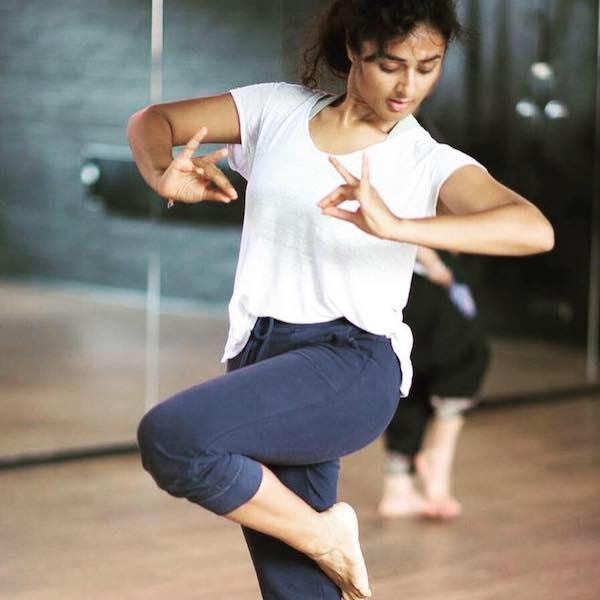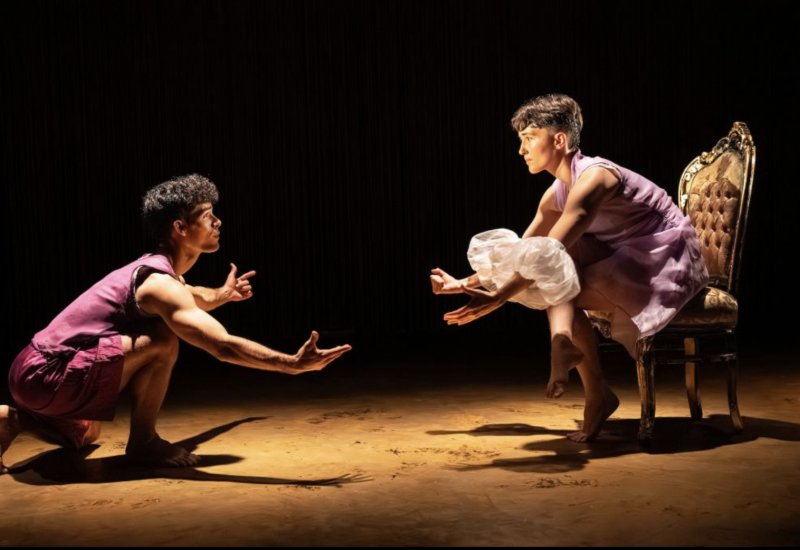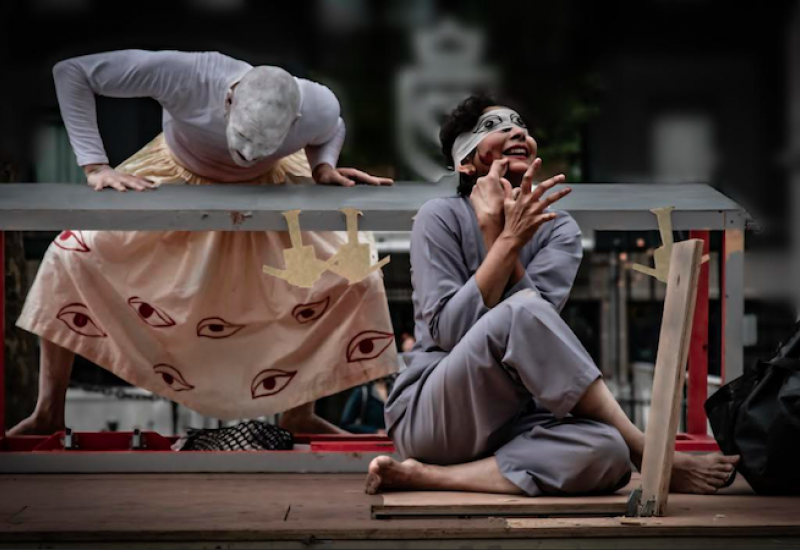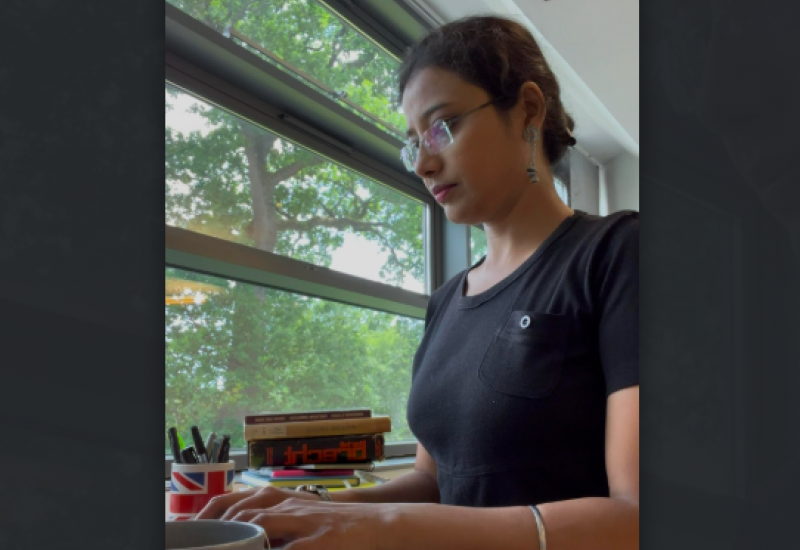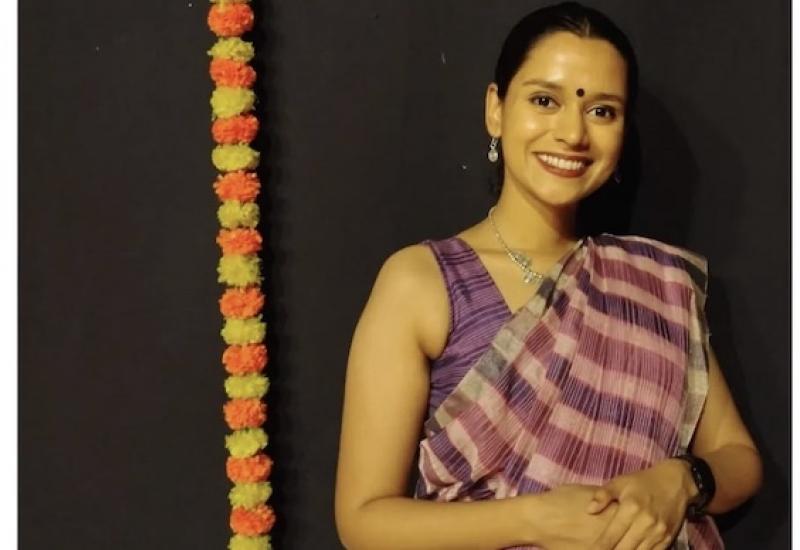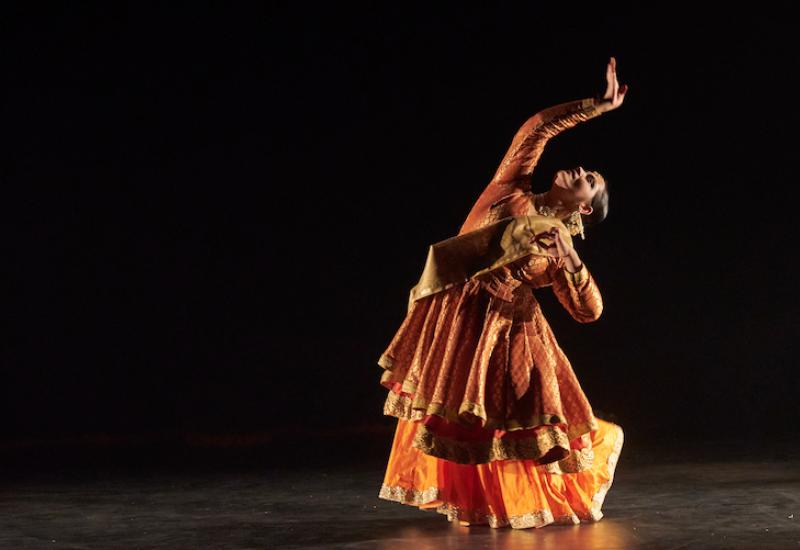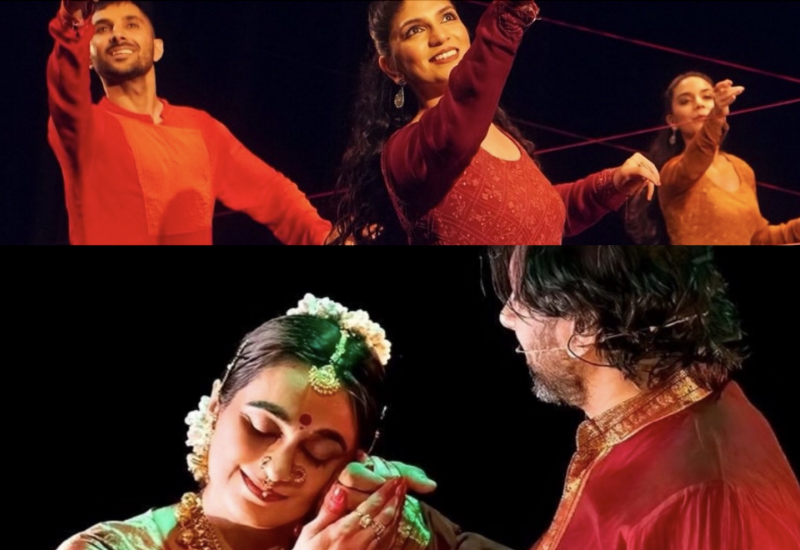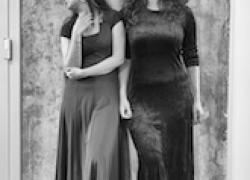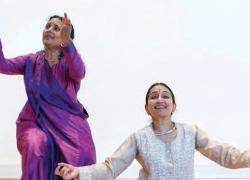Committing to the Classical: A Reflection on Akram Khan Company’s Classical Intensive
Image credit: Simon Richardson
For one week, worlds merged. The otherwise occasional journey to Sadlers Wells became a daily commute, musicians I follow on instagram were in the studio following us, and a choreography that I had once sat forwards in my seat to watch was now something I was inhabiting. For one week, I was lucky enough to be among a small group of dancers selected by Akram Khan Company for some classical dance immersion. Immersion was indeed the word of the week. Morning class was followed by repertoire work, abhinaya and konnakol sessions in the afternoon, evening discussions and some fitness training thrown in. This immersion allowed for an engagement with dance that was synchronous across our physical, emotional, musical and intellectual selves - a synchrony that is otherwise hard to come by in the disjointed nature of freelance urban life.
But more specifically, the intensive left me engaged with my practice in a more urgent and confrontational manner. Mavin Khoo coached the bharatanatyam group, and also led the abhinaya, lec-dem and discussion sessions that were shared with the kathak students. Addressing ‘the younger generation’, he invited us to speak about our individual practices and explain what our goals were. ‘What is your enquiry?’ ‘How are you finding your voice as an artist?’ These were very difficult questions to answer, not least because I don’t usually ask myself them so directly. ‘If you’ve chosen to work outside the classical form, what specifically are you rejecting, and why?’ This question stuck with me as I sweated out the morning’s sequences. Mavin urged us to think about the musicality of the spoken shollu as we danced, to consider each transition carefully as we switched from one adavu to another, to find strength in our torso while our feet laboured, to make each glance completely intentional. I struggled to find any reason to reject any part of my classical practice, an outcome that seemed to be in-line with the aims of the Intensive.
Our time spent inside the repertoire work further consolidated this sense that the classical paradigm could offer complete emotional and artistic fulfillment. Though we worked on the details of the choreography, it soon became clear that the most important thing was our moment-to-moment commitment to the choreography. Mentioning the Stanislavski system of theatre, Mavin emphasised the necessity of actually experiencing the work versus projecting or performing the work. We spent an entire 90 mins working on half a minute’s worth of the piece, taking the time to recreate inside our bodies the scenario that was playing out in the story. If our movements bordered on insincere, we switched to using our voices instead; howling, crying, growling, spluttering, panting, emoting through visceral sounds that reminded our bodies of the physicality we were trying to achieve. Those observing the sessions (also chosen by application and comprising a range of dance practitioners) found themselves in tears on more than one occasion, explaining that they were overwhelmed by the vulnerability that we were accessing. Dancing on the edge of my capacity, to sublime vocals from Chitra Poornima and percussion from Pirashanna Thevarajah, while being attentively and generously encouraged by Mavin - sincere vulnerability came naturally.
Mavin and Akram’s advocacy of the classical form and a die-hard commitment to it was thoroughly convincing and I left the Intensive inspired to fire up the daily riyaaz. But only two weeks on, I find myself once again stretched in various directions in order to keep this vocation afloat; writing applications, scrawling through studio hire options, scheduling meetings with potential supporters, working small jobs for money, commuting across London from one unpaid rehearsal to the next, designing flyers and writing copy, and the list of non-riyaaz engagements goes on. I know by now that space and time for riyaaz has to be obsessively created and protected, but within the daily grind of a dance context that has no space for margams, that aspirational riyaaz begins again to feel increasingly unrealistic.
I had hoped that the Akram Khan Classical Intensive would shed some light on how to navigate the demands of the classical within a fully contemporary-dance-dominated landscape in the UK, but these questions remain unanswered - they certainly weren’t the concern of the many dancers that came from abroad. It’s beginning to seem like nobody has the answers to this British riddle; each successful journey through this landscape seems to be a completely idiosyncratic one, pivoting on unwavering self-belief, a lot of luck and some undefined amount of privilege. Bharatanatyam was my first avenue into dance, and this Intensive made me fall in love with it afresh. I’ve seen with new eyes just how deep I could go, just how much it offers, and my renewed desire to completely immerse myself in it - without any clear idea of how to live off it - frightens me.
Akram Khan Company facebook video

